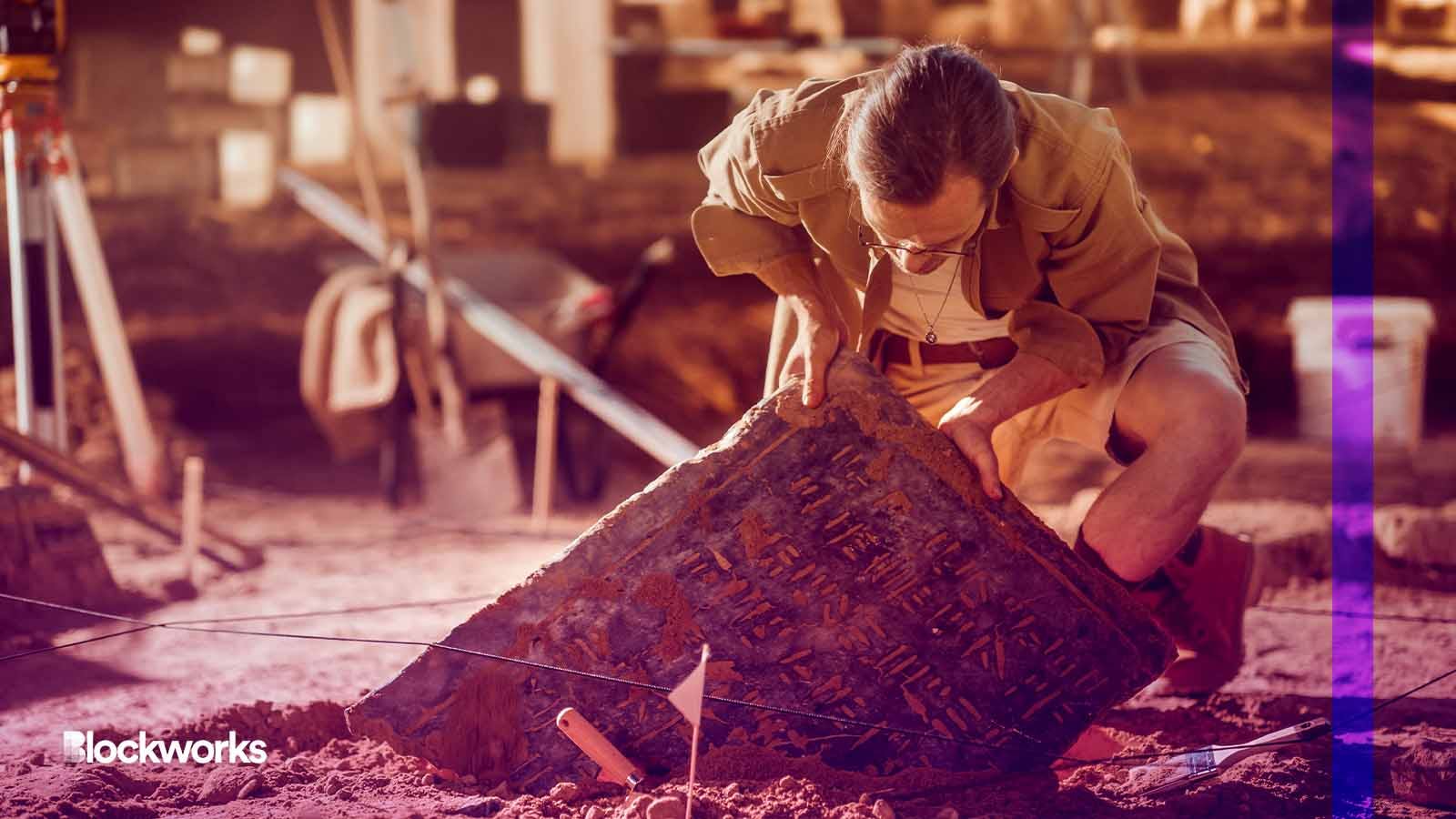Could Ethereum help stop museums from hoarding stolen artifacts? These researchers think so
Salsal is being built on Ethereum by academics Mark Altaweel and Adel Khelifi, and they plan to launch within six months

Gorodenkoff/Shutterstock modified by Blockworks
Researchers are developing an Ethereum-based blockchain tool called Salsal to help museums and cultural institutions organize and keep track of valuable historical collections.
Mark Altaweel, a professor in the archeology department at the University College of London, has been working on Salsal alongside colleagues at Abu Dhabi University for roughly two years.
Altaweel said putting history on the blockchain would be the first step toward “decolonizing museums” and taking back the past.
“Blockchain…allows a decentralized way in dealing with and managing heritage. So if I have expertise about something, and you have expertise about something, we can all participate in these networks,” he told Blockworks in an interview.
Expertise is the key thing Salsal needs to achieve wide adoption. Museums and collectors would submit their collections of historical objects to the Salsal blockchain. Experts, such as archaeologists, would then examine each artifact to determine their condition, provenance, and whether they were legally obtained.
Experts on the Salsal network, which will be a partially-private version of Ethereum, will use the Museum Association’s sliding scale rating standard. A rating of one means the collection and/or items were legally and ethically obtained with plenty of documentation. A rating of five means the items “have clear evidence that they were obtained illegally,” according to Salsal’s white paper.
If a collection is shown to be ethically and legally legitimate with enough documentation to reasonably prove where the items came from, “the collector can then turn their collection into NFTs.”
The NFT portion of the Salsal network will be the public aspect of the blockchain, so people will be able to see and purchase them. This has the added benefit of monetarily supporting museums and collectors.
“Cultural institutions tend to have struggles with things like fundraising. So giving some carrots for people to be involved is what the NFTs are for,” Altaweel said.
Obviously, concerns brewed among Altaweel and his colleagues that illegitimate collections could profit with this incentive in place, so they have removed the option for items that don’t meet experts’ standards to be fashioned into NFTs.
Additionally, Altaweel wants to show all the collections they receive — even the ones with a ‘five’ rating — on the blockchain for transparency’s sake. It’s also his strategy for holding museums with shady ethical practices accountable in terms of holding items of historical significance that were stolen from other cultures.
Many have accused the British Museum in London of retaining pilfered items, some of which were taken during colonial conquests by the British Empire. Some examples of these include the Benin Bronzes from Nigeria, the Parthenon Marbles from Greece, and the Rosetta Stone from Egypt.
The governments of Nigeria and Greece have requested these priceless items back at one point or another. A group of prominent Egyptian archaeologists called for the return of the Rosetta Stone in October 2022.
Altaweel wants to discourage situations like this in the future with his tool.
Read more: Sandbox, British Museum shepherding history into ‘new online era’ with metaverse exhibits
The other inherent use case for Salsal is to have a running, immutable record of the collections stored in museums around the world.
Altaweel brought up how the Baghdad Museum in Iraq was looted during the US invasion of the city in 2003 as part of the US’ war on terror. Anticipating chaos, museum staff vacated the premises two days before the invasion, which allowed thieves to roam the halls and take whatever they wanted.
In all, 15,000 objects were stolen from the museum, according to a 2018 analysis by the University of Sydney.
“While 7,000 items have been recovered, more than 8,000 remain unaccounted for, including artifacts thousands of years old from some of the earliest sites in the Middle East,” the university wrote.
Altaweel likes to imagine that a tool like Salsal, with enough adoption by museums around the world, could prevent future acts of cultural vandalism.
If records of all the items in the Baghdad Museum had been in a blockchain, Altaweel argues that “you would not only know what’s missing, but the community would be involved in looking for these objects.”
Having a record on chain makes it so attestation of ownership and authenticity can’t be destroyed or lost. On-chain storage also allows anyone with an internet connection to view records, which in this case would decentralize control away from museums and better enable the public to help identify and report stolen items, should they reappear in the future.
Altaweel and his colleagues have been pitching Salsal primarily to museums in Abu Dhabi, including the Louvre located in the emirate. They’re also looking to attract funding, something Altaweel said has been tough during the summer.
Salsal is still in its test version, but the overall goal is to launch it on Ethereum within six months, he said.
Get the news in your inbox. Explore Blockworks newsletters:
- The Breakdown: Decoding crypto and the markets. Daily.
- 0xResearch: Alpha in your inbox. Think like an analyst.






